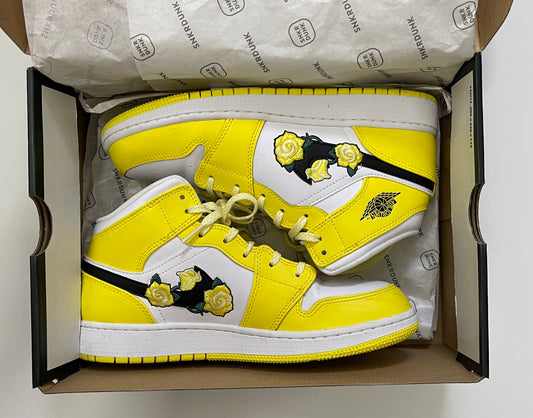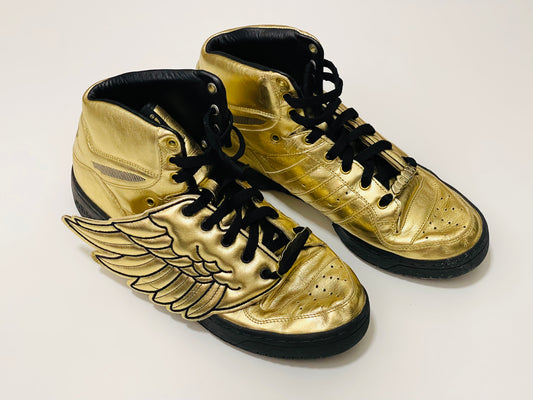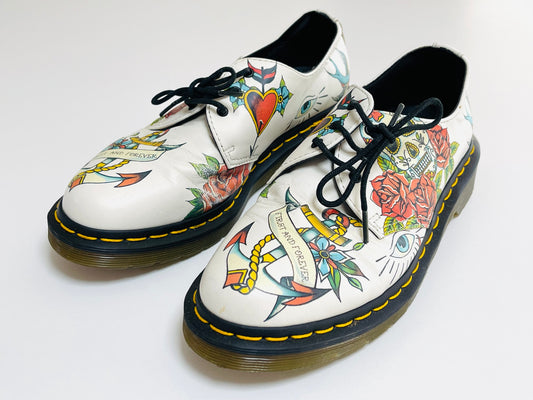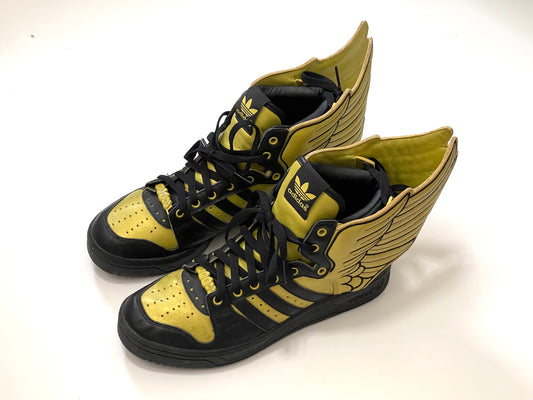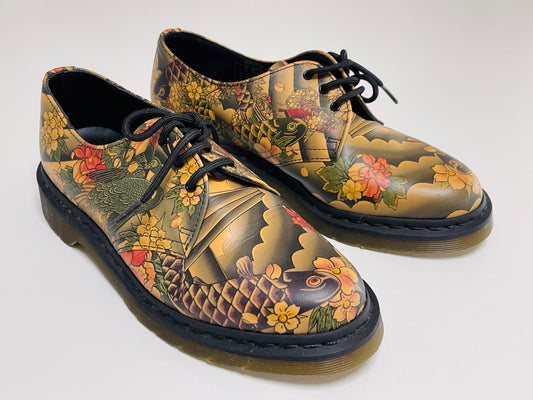A sneaker, also known as a tennis shoe, athletic shoe, or trainer (in the UK), is a type of footwear primarily designed for sports and physical activity. However, sneakers have become a popular fashion choice and are worn for various casual and everyday purposes as well. They are characterized by several key features:
-
Rubber Sole: Sneakers typically have a rubber sole that provides cushioning, support, and traction. The sole is often designed with patterns or treads to enhance grip and prevent slipping.
-
Comfort: Sneakers are designed for comfort, with features like cushioned insoles and lightweight materials that make them suitable for activities like running, walking, and various sports.
-
Closed Design: Sneakers usually have a closed design, covering the entire foot for protection and support. They come in various styles, including low-tops (cut below the ankle), mid-tops (cut at or slightly above the ankle), and high-tops (cut well above the ankle).
-
Lacing System: Most sneakers feature a lacing system that allows wearers to adjust the fit and secure the shoe on the foot. Some designs may also include hook-and-loop straps or elastic closures for easy on and off.
-
Variety of Materials: Sneakers are made from a wide range of materials, including leather, canvas, synthetic fabrics, and various combinations. The choice of material can affect the shoe's durability, breathability, and overall style.
-
Athletic and Casual Styles: Sneakers are produced in a variety of styles to suit different activities and fashion preferences. Some are designed specifically for running, basketball, tennis, or other sports, while others are intended for casual wear and fashion.
-
Branding and Logos: Many sneaker brands prominently display their logos and branding on the shoe, and certain sneaker models are highly sought after for their brand prestige and design aesthetics.
Sneakers have evolved over time from purely functional sports footwear to a significant fashion statement. They are now available in countless designs, colors, and collaborations with various fashion brands and celebrities. Collecting and trading sneakers has become a popular subculture, with some rare and limited-edition sneakers fetching high prices in the resale market.
The term "sneaker" is believed to have originated because the rubber soles of these shoes allow wearers to walk or run quietly, "sneaking" without making much noise. Today, sneakers are a versatile and ubiquitous part of modern footwear, worn by people of all ages for both athletic and fashion purposes.
"Sneaker mania," also known as "sneaker culture" or "sneakerhead culture," refers to the passionate and often obsessive enthusiasm for collecting, wearing, and trading sneakers. Sneaker mania has grown into a global subculture that revolves around athletic footwear, particularly high-end and limited-edition sneakers. Here are some key aspects of sneaker mania:
-
Collecting: Sneaker enthusiasts, known as "sneakerheads," collect sneakers as a hobby. They often seek out rare, limited-edition, and vintage sneakers. Collectors take pride in building extensive and valuable sneaker collections.
-
Limited Releases: Sneaker manufacturers release limited quantities of certain models to create hype and exclusivity. These limited releases can lead to long lines, campouts, and online raffles as collectors compete to secure a pair.
-
Resale Market: The resale market for sneakers has become a significant aspect of sneaker culture. Some rare and highly sought-after sneakers can fetch prices far above their original retail cost, and platforms like StockX, GOAT, and Grailed facilitate sneaker resales.
-
Customization: Many sneakerheads customize their sneakers to create unique and personalized designs. Customization can involve painting, adding custom materials, or altering the shoe's appearance in various ways.
-
Sneaker Events: Sneaker conventions, trade shows, and events like Sneaker Con provide a space for collectors to buy, sell, and trade sneakers. These events also showcase sneaker-related fashion, art, and culture.
-
Collaborations: Sneaker brands frequently collaborate with celebrities, fashion designers, and artists to create limited-edition sneaker collections. These collaborations generate significant buzz and demand among sneaker enthusiasts.
-
Fashion and Style: Sneakers have become a key element of contemporary fashion. They are worn with a wide range of outfits, including streetwear, casual wear, and even formal attire, reflecting the fusion of sports and fashion in modern culture.
-
Community and Social Media: Sneakerheads often connect through social media platforms, online forums, and local sneaker meetups. Instagram, YouTube, and dedicated sneaker websites are popular spaces for sharing collections and discussing releases.
-
Historical and Cultural References: Sneaker enthusiasts often appreciate the history and cultural significance of specific sneaker models. Iconic sneakers like the Air Jordan series are seen as symbols of sports and pop culture history.
Sneaker mania has evolved over the years and is driven by a combination of factors, including fashion trends, celebrity endorsements, and marketing strategies by sneaker manufacturers. It has also become a lucrative industry, with some individuals and businesses specializing in sneaker resales and trading.
While sneaker mania can be seen as a subculture centered around athletic footwear, it has also had a broader impact on fashion and pop culture, influencing the way people perceive and incorporate sneakers into their daily lives.
